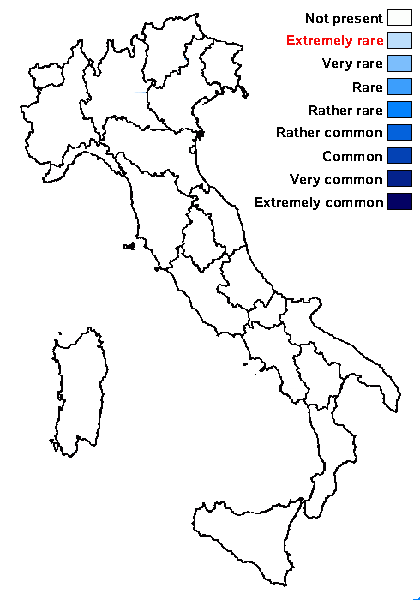Thelenidia monosporella Nyl.
Flora, 69: 463, 1886
Synonyms:
Distribution:
Description: Thallus crustose, thinly episubstratic, continuous and film-like, smooth to nodular-verruculose, greyish-green to brownish-green. Perithecia black, largely immersed in the thallus, projecting only with the periostiolar region, 0-3.0.4 mm wide, without involucrellum. Exciple globular, 250-300(-400) µm across, the wall colourless, but closely surrounded up to the ostiole by a thalline layer containing many closely packed clusters of algal cells, a few of which lie within the wall itself and are rather sparsely scattered also among the thin, flexuose, delicate paraphyses. Asci 1-spored, bitunicate, slightly thickened at apex, 50-80 x 15-30 µm. Ascospores 1-celled, hyaline, oblong with rounded ends, usually slightly constricted in the middle, 40-55 x 15-20(-30) µm. Photobiont chlorococcoid, the cells cells 5-10 µm wide. Spot tests: Thallus K-, C-, KC-, P-. Chemistry: probably without lichen substances.Note: an arctic alpine, extremely rare but also easily overlooked species with unclear affinities. It grows on more or less calciferous soil and sometimes directly on rock, in rather humid situations; described from Switzerland, and also known from Greenland and the French Alps. To be looked for in the Italian Alps.
Growth form: Crustose
Substrata: rocks, soil, terricolous mosses, and plant debris
Photobiont: green algae other than Trentepohlia
Reproductive strategy: mainly sexual

Predictive model
Growth form: Crustose
Substrata: rocks, soil, terricolous mosses, and plant debris
Photobiont: green algae other than Trentepohlia
Reproductive strategy: mainly sexual

Predictive model

